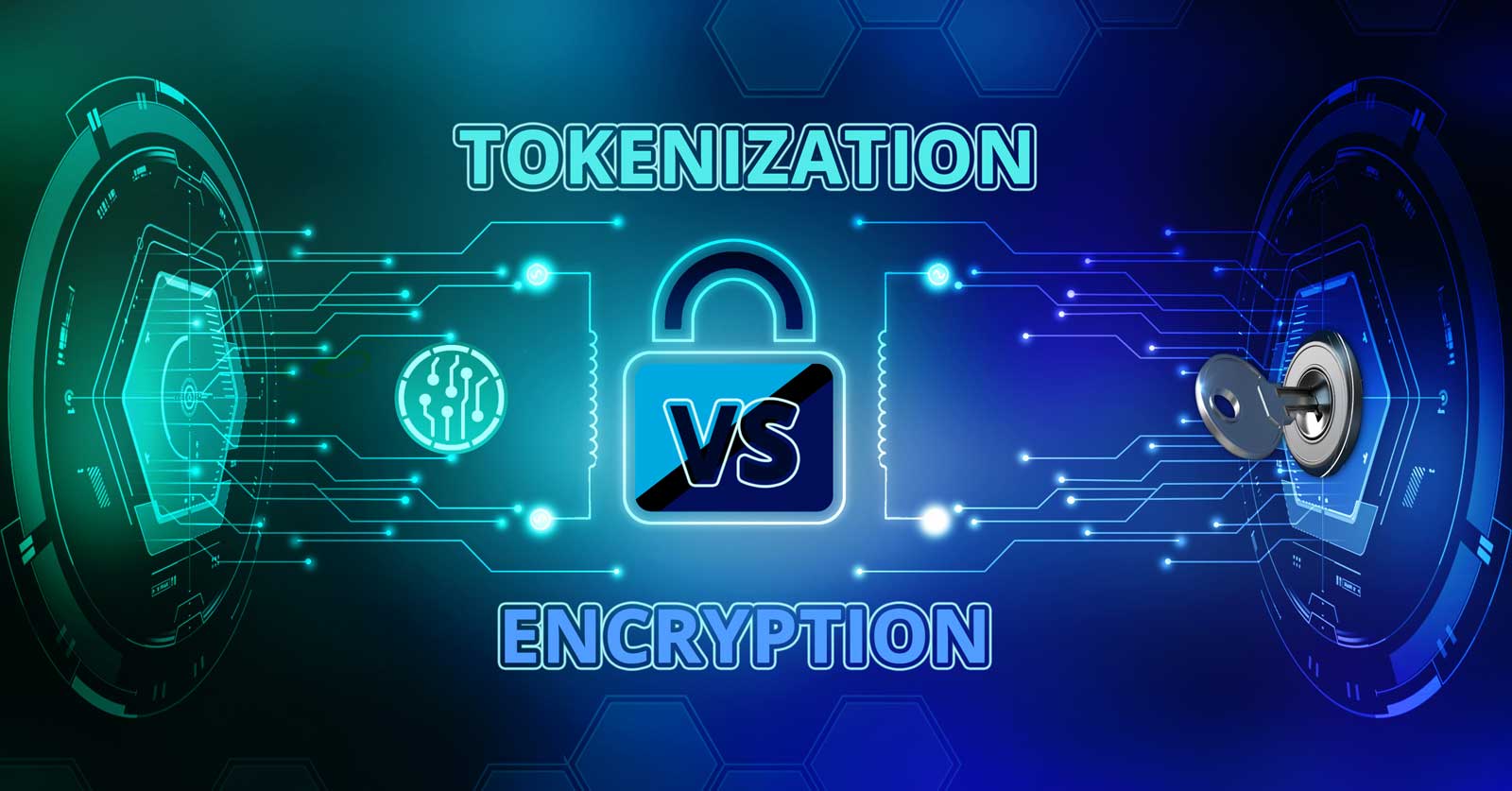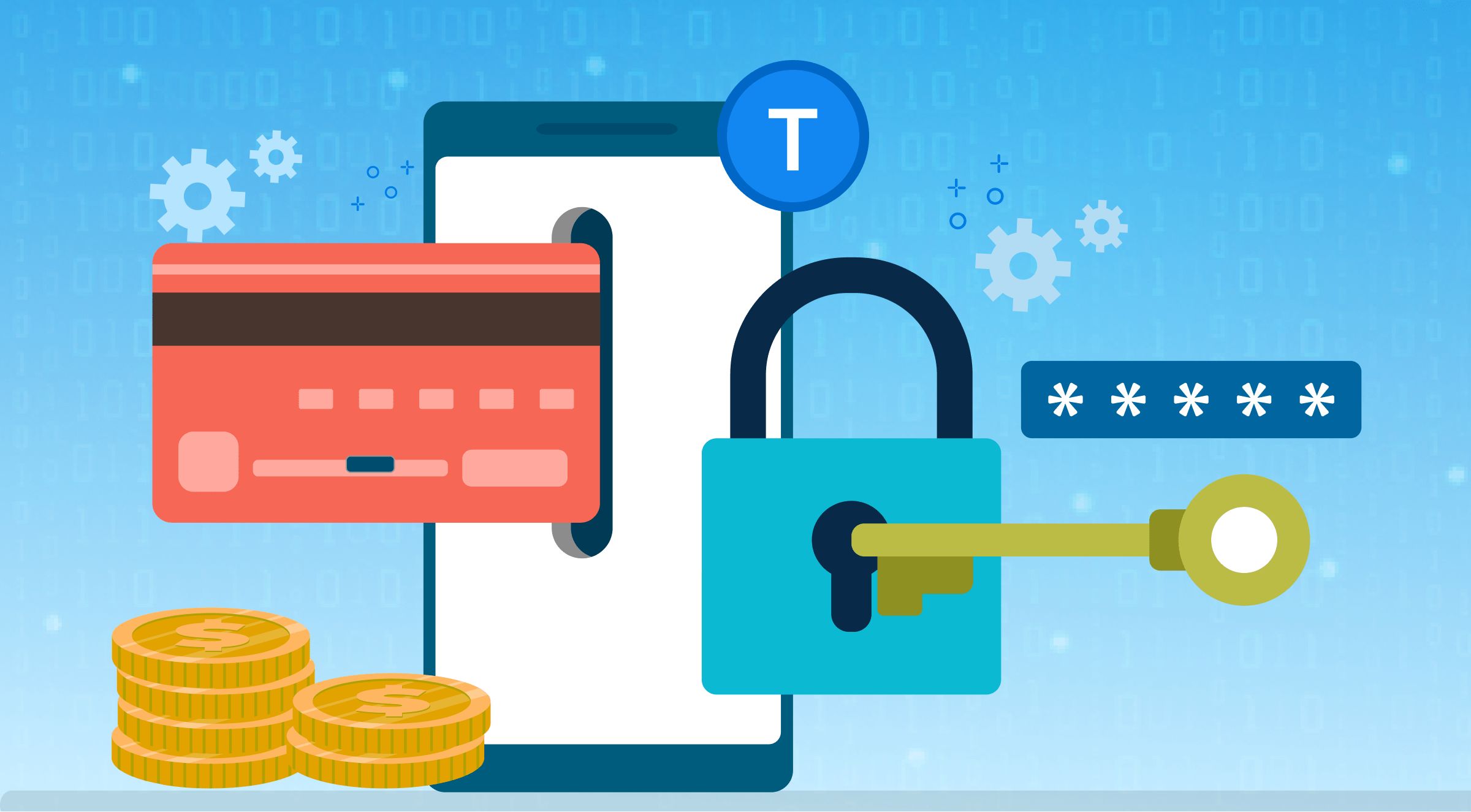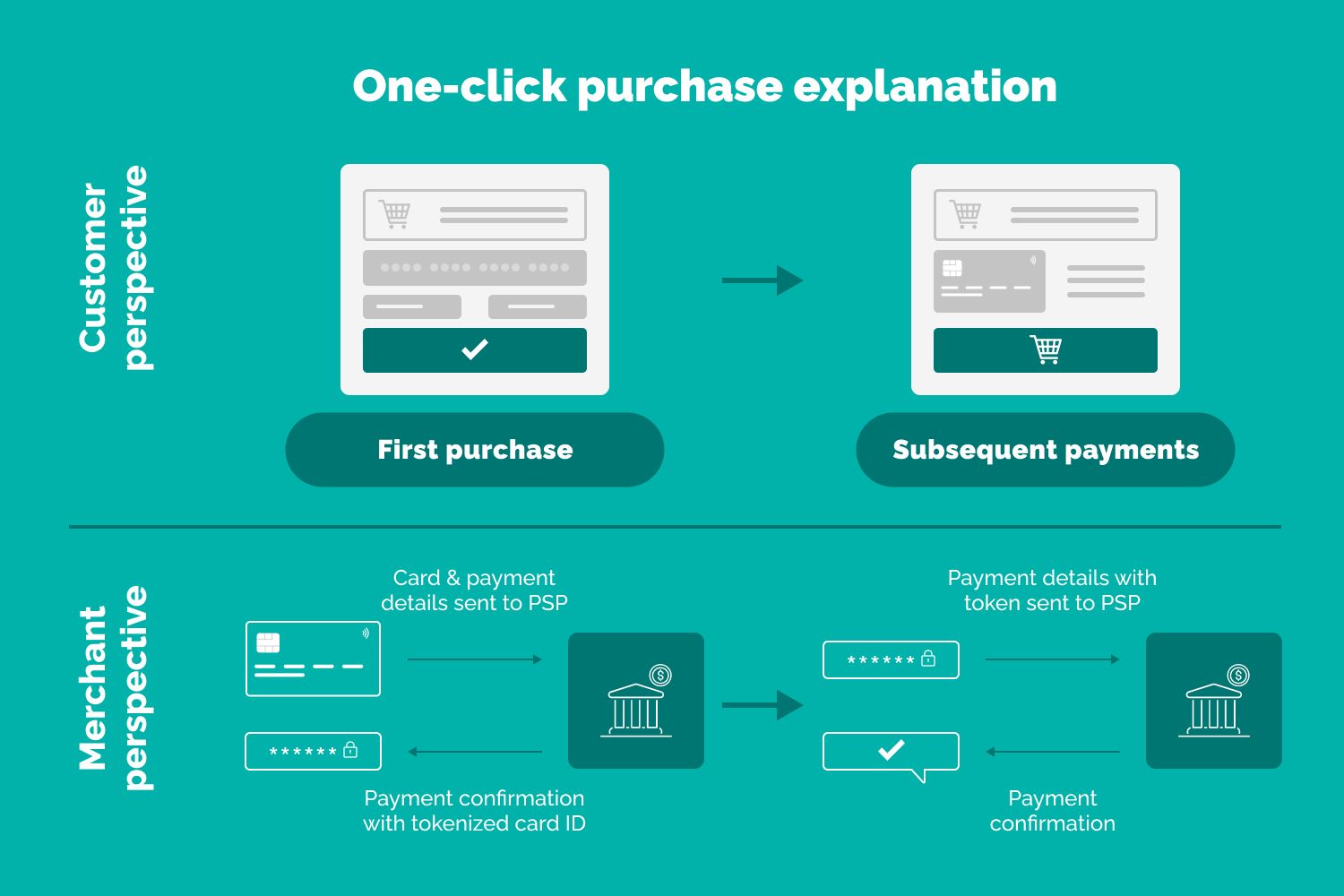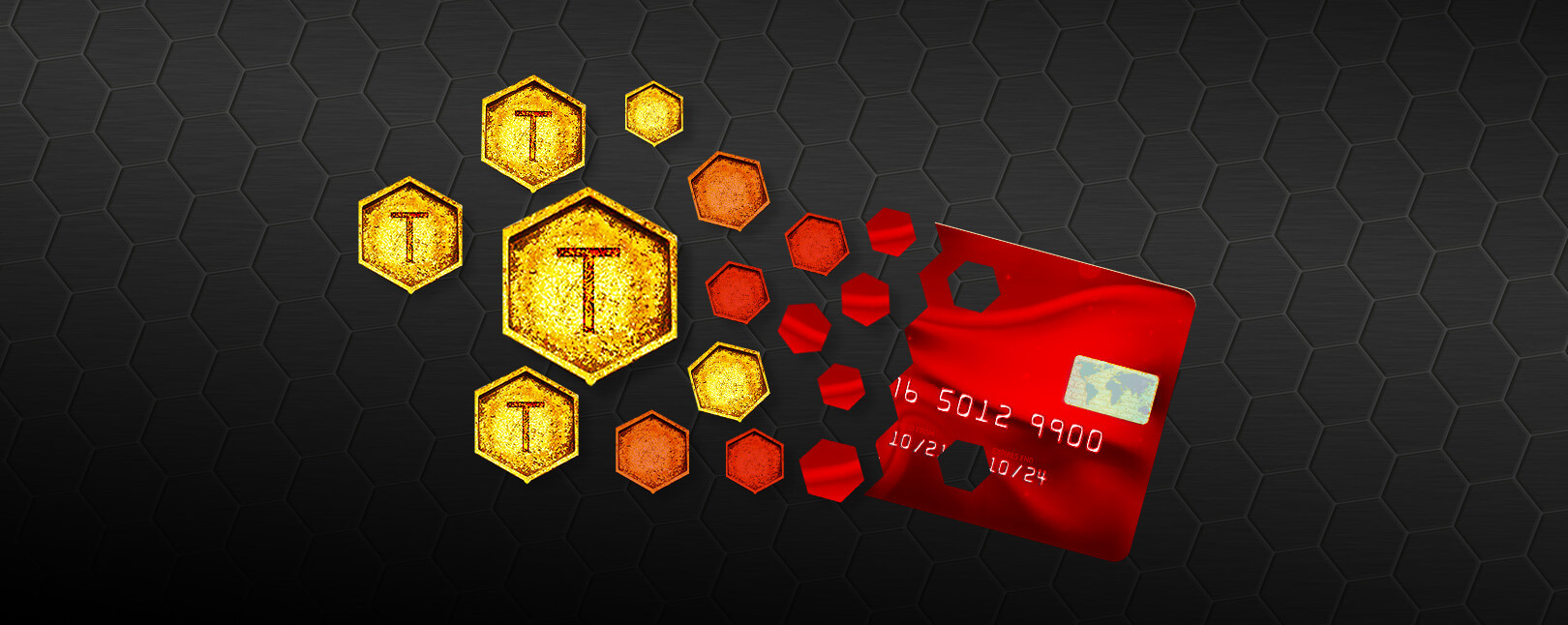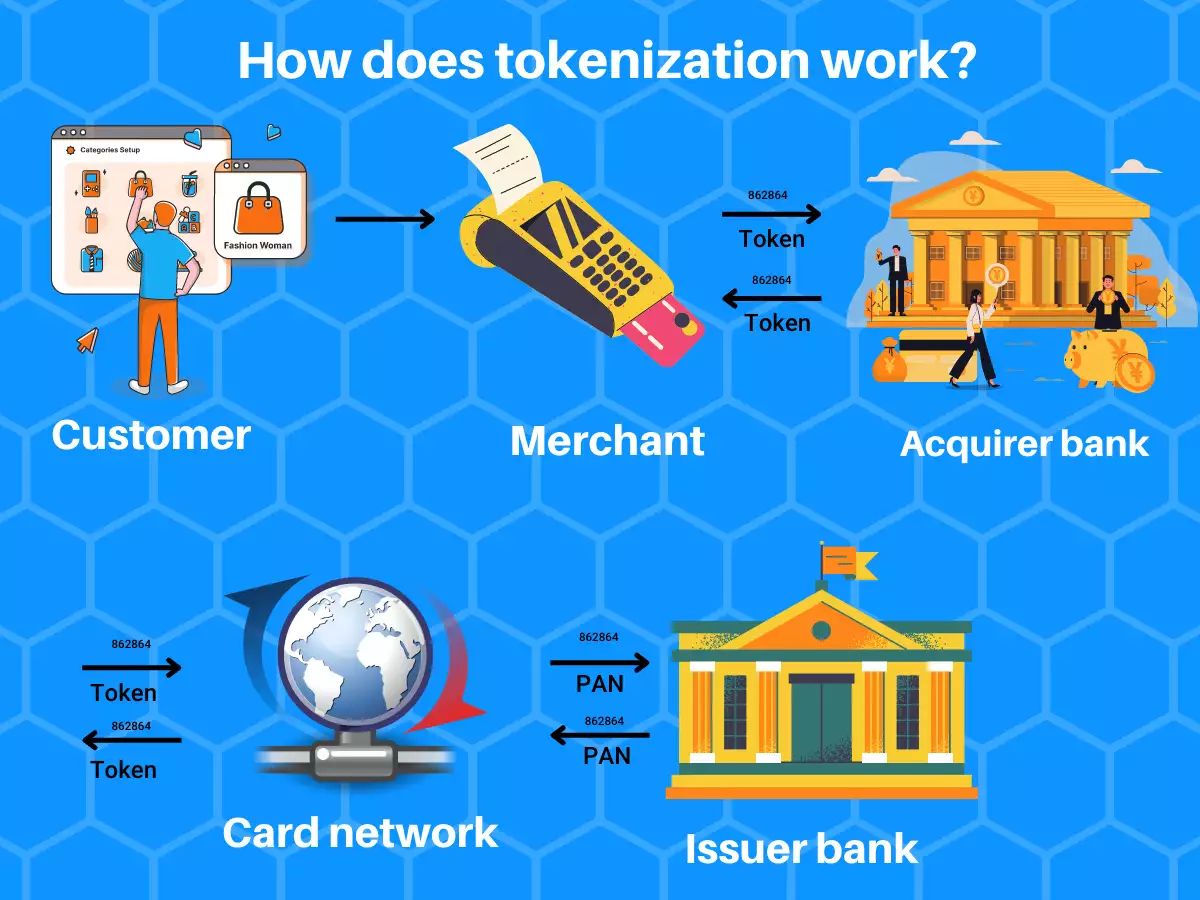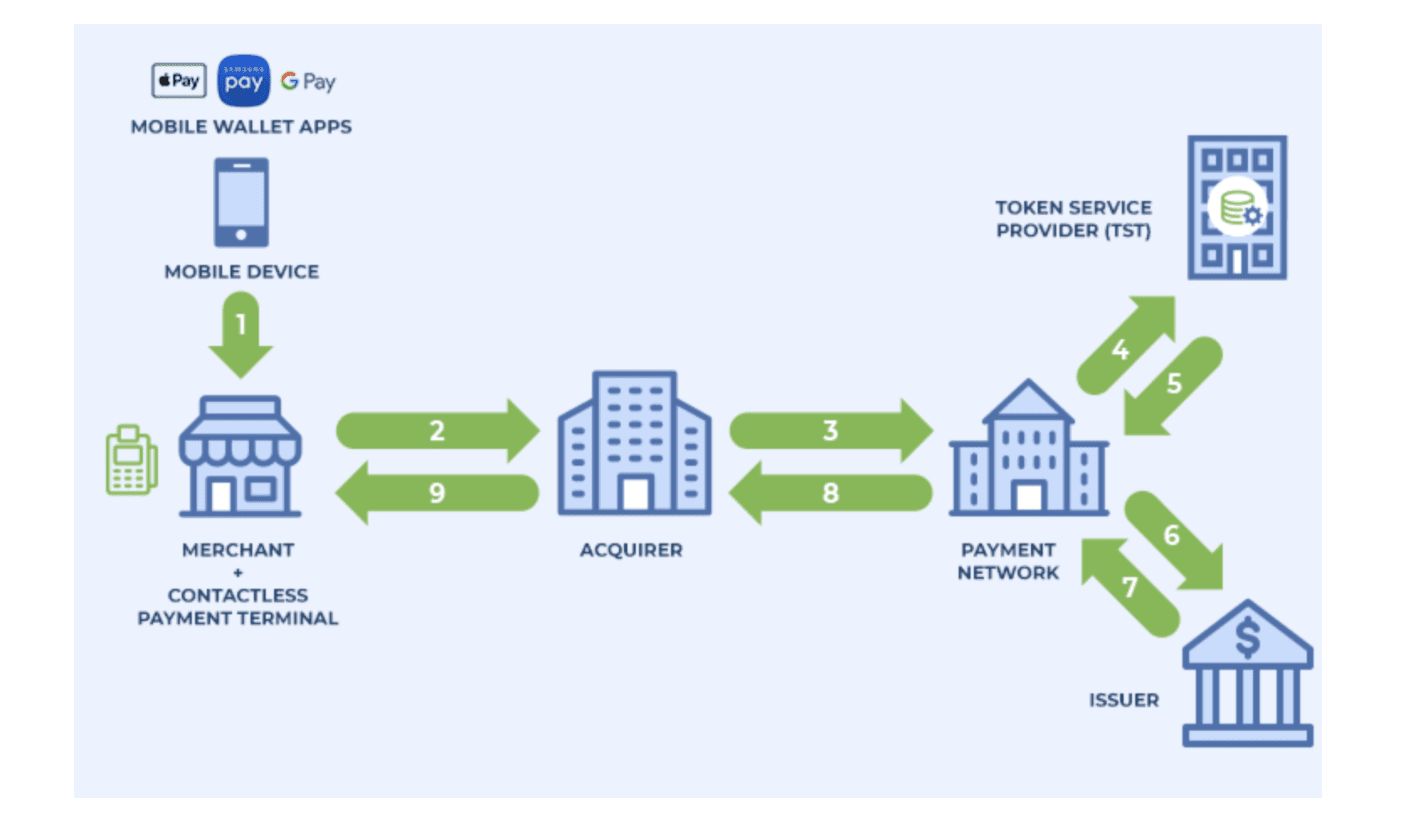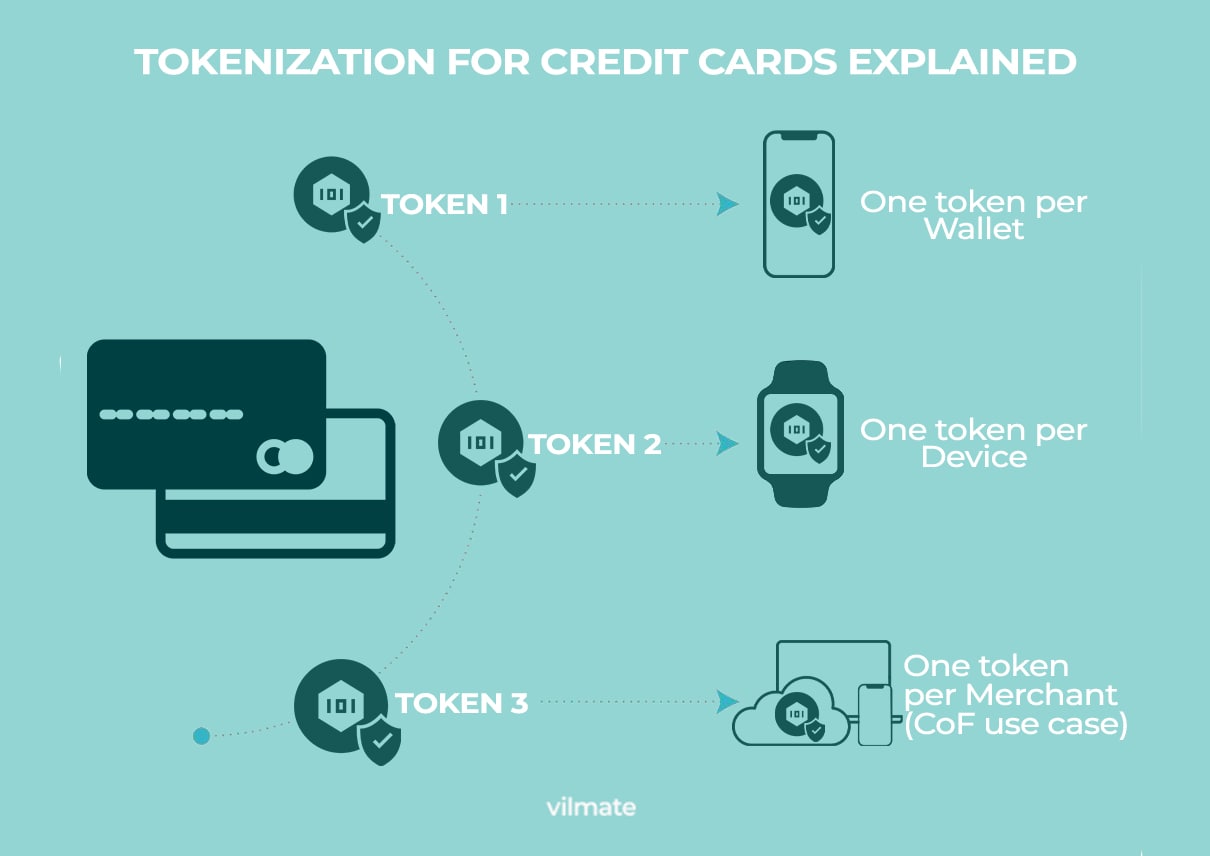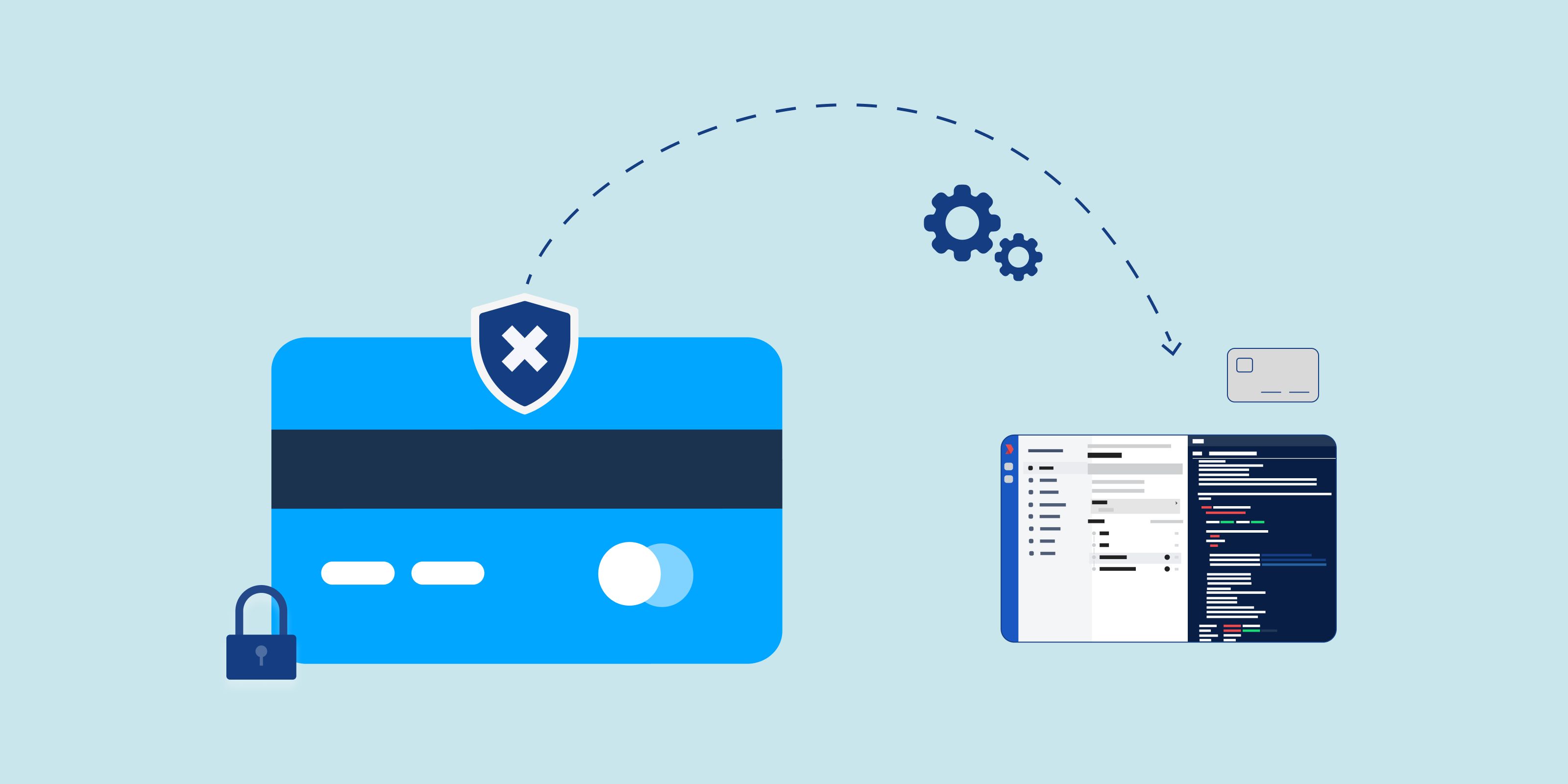Introduction
When it comes to securing sensitive data, organizations have to be diligent in implementing robust measures. Two popular methods that are often employed are tokenization and encryption. While both techniques serve the purpose of safeguarding data, they differ in their approach and functionality. Understanding the differences between tokenization and encryption is crucial for businesses to select the most suitable method for their data protection needs.
Tokenization and encryption are both cryptographic processes that protect data from unauthorized access. However, they serve different purposes and have distinct strategies. Tokenization replaces sensitive data with non-sensitive placeholders, known as tokens, whereas encryption converts the data into ciphertext using a cryptographic algorithm. These techniques offer different levels of security, data format, key management, and performance metrics.
In this article, we will delve into the nuances of tokenization and encryption and explore the key differences between the two methods. By examining their security, data format, key management, and performance aspects, we aim to provide a comprehensive understanding of how tokenization and encryption differ and which scenarios warrant the use of each method.
Overview of Tokenization
Tokenization is a data protection technique that involves the substitution of sensitive data with randomly generated tokens. These tokens have no inherent meaning and do not contain any direct reference to the original data. The process of tokenization follows a strict mapping algorithm, ensuring that the original data cannot be derived from the generated tokens.
Tokenization operates on a secure server or in a trusted environment, minimizing the risk of the original data being compromised. The sensitive information, such as credit card numbers or social security numbers, is securely stored in a central repository, often referred to as a token vault or database. Only authorized users with the proper credentials can access and retrieve the original data from this secure storage.
The main advantage of using tokenization is its ability to separate sensitive data from systems and applications where it is not needed. By substituting sensitive information with tokens, organizations reduce the potential exposure of critical data during day-to-day business operations. This technique also helps to simplify compliance with data protection regulations, such as the Payment Card Industry Data Security Standard (PCI DSS).
Tokenization is commonly utilized in the payment industry, where it enables secure transmission and storage of customer payment data. Instead of storing actual credit card numbers in merchant databases, tokens are stored, minimizing the risk of a data breach. Tokens are also used during transaction processing, allowing merchants to charge customers without directly handling or storing their sensitive payment information.
+
It is important to note that tokenization does not provide the same level of mathematical security as encryption. Unlike encryption, which uses complex algorithms and encryption keys to secure data, tokenization relies on tokenization algorithms and reference tables. However, tokenization does offer benefits in terms of flexibility and ease of implementation, making it an attractive option for organizations aiming to protect sensitive data while maintaining operational efficiency.
Overview of Encryption
Encryption is a method of securing data by converting it into an unreadable format using cryptographic algorithms. The process of encryption involves the use of an encryption key, which is a unique mathematical value that transforms the original data, known as plaintext, into ciphertext. Encryption ensures that even if unauthorized individuals gain access to the encrypted data, they will not be able to decipher it without the corresponding decryption key.
The strength of encryption lies in the complexity of the encryption algorithm and the length and randomness of the encryption key. Symmetric encryption uses the same key for both encryption and decryption, while asymmetric encryption utilizes a pair of keys: a public key for encryption and a private key for decryption. This dual-key system adds an extra layer of security to the encrypted data.
Encryption can be applied to various types of data, including files, emails, and communications between devices. It is widely used to protect sensitive information, such as personal and financial data, trade secrets, and confidential communications. Encryption provides organizations with a method to secure their data and comply with data protection regulations, ensuring the privacy and integrity of their information.
One of the key advantages of encryption is that it provides a high level of security. The use of strong encryption algorithms and robust encryption keys can make it extremely difficult for attackers to break the encryption and access the original data. This makes encryption an ideal choice for protecting data that requires the highest level of security, such as government and military communications, financial transactions, and sensitive corporate information.
However, encryption can also introduce challenges in terms of key management and performance. Key management involves securely storing and distributing encryption keys to authorized parties, while ensuring that they are protected from unauthorized access. The performance of encryption can also be impacted, especially when dealing with large volumes of data, as the process of encryption and decryption can be computationally intensive.
Overall, encryption is a powerful method for securing data and has proven to be effective in protecting sensitive information against unauthorized access. It is widely used in various industries and applications, providing a strong line of defense against potential data breaches and unauthorized data exposure.
Key Differences Between Tokenization and Encryption
While both tokenization and encryption serve the purpose of securing data, there are several key differences between the two methods. These differences lie in their approach to data protection, security level, data format, key management, and performance. Understanding these distinctions is essential for organizations to make informed decisions regarding their data protection strategies.
Security: Encryption is considered to provide a higher level of security compared to tokenization. Encryption uses strong cryptographic algorithms and encryption keys to transform data into an unreadable format, which can only be decrypted with the corresponding decryption key. In contrast, tokenization relies on tokenization algorithms and reference tables, making it less mathematically secure than encryption. However, tokenization still offers robust security by keeping sensitive data separate from systems and applications.
Data Format: Tokenization completely replaces sensitive data with non-sensitive tokens. These tokens have no inherent meaning and do not contain any direct reference to the original data. Encryption, on the other hand, converts the data into ciphertext, which retains the format and structure of the original data but renders it unreadable without the decryption key. This difference in data format affects how the protected data can be used and accessed within different systems and applications.
Key Management: Key management is a critical aspect of data protection. In encryption, the secure management of encryption keys is essential to maintain the confidentiality and integrity of the data. Both the encryption key and the corresponding decryption key must be securely stored and distributed to authorized parties. In tokenization, the sensitive data is stored in a central token vault while the tokens themselves are typically managed within the application or system using a mapping algorithm.
Performance: Performance is another differentiating factor between tokenization and encryption. Tokenization is generally faster and requires less computational power compared to encryption. Encryption involves complex mathematical calculations, which can be resource-intensive, especially when handling large volumes of data. In contrast, tokenization avoids the need for complex encryption and decryption processes, resulting in faster data processing and reduced performance overhead.
It is important to note that both tokenization and encryption have their own specific use cases and advantages. Tokenization is particularly suitable for scenarios where sensitive data needs to be stored separately from systems and applications, such as in the payment industry. Encryption, on the other hand, is well-suited for protecting data that requires the highest level of security, such as government communications or sensitive corporate information.
By understanding the key differences between tokenization and encryption, organizations can make informed decisions about which method best suits their specific data protection needs. Whether it’s prioritizing security, data format, key management, or performance, selecting the appropriate technique is crucial to ensuring the confidentiality and integrity of sensitive data.
Security
When it comes to data security, both tokenization and encryption play crucial roles in protecting sensitive information. However, there are notable differences in the security mechanisms employed by the two methods.
Encryption: Encryption is widely regarded as a highly secure method for data protection. It uses advanced cryptographic algorithms and encryption keys to transform data into an unreadable format, known as ciphertext. The security strength of encryption lies in the complexity of the encryption algorithm and the length and randomness of the encryption key. Without the corresponding decryption key, attackers would find it extremely challenging to decipher the encrypted data.
The use of encryption ensures that data remains secure even if it is intercepted or accessed by unauthorized individuals. As a result, encryption is extensively utilized in sectors where the utmost data security is required, such as government agencies, financial institutions, and healthcare facilities. Compliance with data protection regulations, such as the General Data Protection Regulation (GDPR) and the Health Insurance Portability and Accountability Act (HIPAA), often mandates the use of encryption for sensitive data.
Tokenization: While tokenization does not provide the same level of mathematical security as encryption, it still offers robust protection for sensitive data. Tokenization replaces sensitive information with randomly generated tokens. These tokens have no direct correlation to the original data, making it difficult for attackers to reverse-engineer the original information from the tokens.
One advantage of tokenization is that it separates sensitive data from systems and applications, significantly reducing the risk of data breaches or unauthorized access. Even if an attacker gains access to the tokenized data, they would not possess the necessary information to retrieve the original sensitive data from the token vault. Additionally, tokenization can simplify compliance with data protection regulations, particularly where storing sensitive data is restricted or requires additional security measures.
However, it is important to note that tokenization relies on the security of the tokenization process and the protection of the token vault where the sensitive data is stored. If these components are compromised, there is a potential risk of data exposure. Organizations must implement strong security measures to safeguard the tokenization process and protect the token vault from unauthorized access.
In summary, while encryption offers a higher level of mathematical security, tokenization provides a practical and effective method for reducing the risk of data breaches and securing sensitive information. Each method has its own strengths and is suitable for different use cases. It is essential for organizations to carefully evaluate their security requirements and select the appropriate data protection technique based on their specific needs and data privacy regulations.
Data Format
The data format used in tokenization and encryption differs significantly, impacting how the protected data is represented and accessed within systems and applications.
Encryption: In encryption, the original data, known as plaintext, is transformed using cryptographic algorithms into ciphertext, which maintains the format and structure of the original data. The ciphertext, however, is rendered unreadable without the corresponding decryption key. This allows the encrypted data to be securely transmitted or stored while retaining its original data format.
The ability to preserve the data format in encryption is particularly useful in scenarios where data needs to be transmitted or processed without altering its structure. For example, encrypted files can be securely transferred between individuals or organizations, and encrypted emails can be sent across networks while maintaining their original format.
Tokenization: On the other hand, tokenization replaces sensitive data with randomly generated tokens. These tokens are non-sensitive and have no inherent meaning or reference to the original data. As a result, the tokenized data does not retain the format or structure of the original information. Instead, it is represented solely by the generated tokens.
The use of tokens allows organizations to store and handle sensitive information without requiring access to the actual data. For instance, in the payment industry, merchants can tokenize customer credit card numbers to safeguard the data during transactions. This method ensures that the sensitive card information is not stored within merchant systems, reducing the risk of a data breach. However, the tokens themselves do not reveal any details about the cardholder or the original payment information.
It is important to consider the implications of data format when choosing between tokenization and encryption. Encryption maintains the original data format, allowing for seamless storing, transmitting, and processing without any additional steps. In contrast, tokenization sacrifices the ability to directly access and operate on the original data, as it can only be retrieved using the corresponding token mapping algorithms.
Organizations should evaluate their specific data storage and processing requirements when selecting between tokenization and encryption. Encryption may be more suitable when data integrity and format preservation are crucial, while tokenization may be preferred in scenarios where separating sensitive data from systems and applications is a priority, even if it means sacrificing direct access to the original data format. By understanding the differences in data format, organizations can make informed decisions to protect and manage their sensitive information effectively.
Key Management
Effective key management is essential for maintaining the security and integrity of data protected through tokenization or encryption. The key management processes differ between these two methods, reflecting their distinct approaches to data protection.
Encryption: In encryption, the secure management of encryption keys is crucial to ensure the confidentiality and integrity of the data. Encryption typically involves the use of a symmetric or asymmetric key pair. Symmetric encryption uses the same key for both encryption and decryption, while asymmetric encryption utilizes a public-private key pair.
The encryption keys must be securely stored, protected from unauthorized access, and managed according to industry best practices. Organizations need to establish robust processes and systems for key generation, distribution, rotation, and revocation. This includes safeguarding the keys from physical theft or loss and preventing unauthorized disclosure or misuse. Weak key management can negate the security benefits of encryption, leading to potential data breaches.
Tokenization: Key management in tokenization focuses on securely storing and managing the sensitive data in a central token vault. The tokens themselves are generated based on a tokenization algorithm and are usually managed within the application or system that interacts with the data.
Tokenization provides an additional layer of security as the original sensitive data is kept separate from systems and applications. The token vault requires robust access controls and encryption to prevent unauthorized access to the sensitive data stored within it. Organizations must establish strict protocols for managing access to the token vault, ensuring that only authorized individuals can retrieve or manipulate the original data.
The secure management of encryption keys and token vaults is equally critical to the overall security of sensitive data. Organizations must implement comprehensive key management practices, including encryption key protection, secure storage, and access control, to maintain the confidentiality and integrity of encrypted data. Similarly, they must establish stringent controls and protocols for accessing and managing the token vault to prevent unauthorized disclosure or misuse of sensitive information.
It is also important to consider the scalability and flexibility of key management processes. As organizations handle increasing volumes of data, they need to ensure the efficient generation, distribution, and rotation of encryption keys. Similarly, the tokenization system must be capable of managing a large number of tokens while maintaining the integrity and security of the sensitive data.
Successful key management is a vital component of a robust data protection strategy. Whether employing encryption or tokenization, organizations must prioritize strong key management practices to safeguard sensitive information effectively. Regular audits and assessments should be conducted to validate the security of key management processes and ensure adherence to industry best practices and regulatory requirements.
Performance
Performance plays a crucial role when considering data protection methods such as tokenization and encryption. Both techniques have different implications on the speed and efficiency of data processing and storage.
Encryption: Encryption can introduce performance overhead due to the computational resources required to encrypt and decrypt data. The encryption process involves complex mathematical calculations that can impact the speed of data transmission and processing. The level of impact on performance depends on factors such as the encryption algorithm used and the size of the data being encrypted.
Symmetric encryption algorithms, such as Advanced Encryption Standard (AES), tend to be faster compared to asymmetric encryption algorithms, such as RSA, due to their simpler mathematical operations. However, the size of the data being encrypted or decrypted can significantly affect the overall performance. Large files or datasets may experience noticeable delays in processing due to the computational demands of encryption.
Additionally, encryption requires the management and distribution of encryption keys, which can introduce additional overhead. The secure handling and storage of encryption keys must be carefully managed to ensure the data remains protected while maintaining operational efficiency.
Tokenization: Tokenization can provide better performance compared to encryption due to its simplicity. The tokenization process typically involves straightforward token generation and replacement, which can be performed quickly, especially when compared to complex encryption and decryption operations.
Tokenization eliminates the need for cryptographic calculations, making it a faster option for data processing and storage. It requires fewer computational resources, resulting in reduced latency and faster data processing times. This makes tokenization particularly advantageous in high-volume transactional environments, where speed is critical.
However, it is important to note that the tokenization approach may have limitations in some use cases. For example, if there is a requirement to perform operations directly on the original data without accessing the token vault, tokenization may introduce additional overhead or complexity. In such cases, encryption may be a more suitable choice, despite potential performance considerations.
Organizations should carefully consider their data processing requirements and evaluate the trade-offs between performance and data protection when choosing between tokenization and encryption. If speed and efficiency are critical, tokenization may be preferred. However, if the focus is on a higher level of security with potential performance trade-offs, encryption may be the better option.
Ultimately, achieving a balance between data protection and performance is key. Regular monitoring and optimization of data protection processes are essential to ensure that the chosen method meets the desired performance targets while providing the required level of security for sensitive data.
Use Cases for Tokenization
Tokenization is a versatile data protection method that offers several use cases across various industries. Its ability to separate sensitive data from systems and applications makes it a valuable solution for safeguarding critical information. Let’s explore some common use cases for tokenization:
Payment Industry: Tokenization is widely adopted in the payment industry to secure customer payment data. Instead of storing actual credit card numbers or other sensitive payment information, merchants tokenize the data and store it in their systems. This ensures that sensitive cardholder information is not accessible, reducing the risk of data breaches and increasing customer trust. Tokens are used during transactions, allowing merchants to charge customers without directly handling or storing their sensitive payment information.
Healthcare Sector: Tokenization offers significant benefits in healthcare, where sensitive patient data, such as medical records or insurance information, needs to be protected. Healthcare providers can tokenize patient information and store it in their system, ensuring that sensitive data is securely managed. This protects patient privacy and helps organizations comply with healthcare data protection regulations, such as the Health Insurance Portability and Accountability Act (HIPAA).
Cloud Storage: Tokenization is an effective method for securing data stored in cloud environments. In cloud storage, information is usually divided into chunks and distributed across various servers. By tokenizing the data before it is stored, organizations can add an extra layer of security, ensuring that only authorized parties can access the original information. This is particularly beneficial when storing sensitive documents or files in the cloud, providing an additional level of control and protection.
Customer Data Protection: Many businesses collect and store customer data, including personal information and preferences. Tokenization can help safeguard this data and protect customer privacy. By tokenizing the sensitive customer information, organizations can limit exposure to potential breaches and unauthorized access. This is especially important in industries such as e-commerce, where large volumes of customer data are processed and stored.
Data Sharing and Collaboration: Tokenization also facilitates secure data sharing and collaboration between organizations. By tokenizing sensitive data before sharing it with partners or external parties, organizations can control access to the original information. The tokens can be used for collaboration purposes without revealing the actual sensitive data, reducing the risks associated with data sharing and ensuring data integrity and confidentiality.
Tokenization offers a flexible and effective solution for protecting sensitive data across various industries. Its ability to secure payment information, healthcare data, cloud storage, customer information, and facilitate data sharing makes it a valuable tool for organizations aiming to enhance data security and maintain regulatory compliance. By implementing tokenization, businesses can reduce the risk of data breaches and build trust with customers, ultimately contributing to their overall growth and success.
Use Cases for Encryption
Encryption is a powerful data protection technique that finds its application across various industries and use cases. Its ability to transform data into an unreadable format provides a high level of security, making it an essential tool for safeguarding sensitive information. Let’s explore some common use cases for encryption:
Financial Sector: Encryption plays a critical role in the financial sector, where secure transmission and storage of customer financial data are paramount. Encryption is applied to financial transactions, online banking systems, and mobile payment applications, ensuring the confidentiality and integrity of sensitive financial information. By encrypting data, financial institutions can secure customer account details, credit card numbers, and transaction records, protecting both the customers and the organization from potential data breaches.
Government and Military Communications: Encryption is extensively used in government and military communications to protect classified and sensitive information. By encrypting communication channels and messages, it becomes extremely difficult for unauthorized parties to intercept and decipher the information. This is particularly crucial in intelligence agencies, military operations, and diplomatic communications, where the security of information is a matter of national security.
Personal Data Protection: Encryption is widely employed for securing personal data, such as social security numbers, medical records, and passwords. Organizations storing personal-data-intensive information, such as healthcare providers, e-commerce platforms, and online service providers, rely on encryption to protect customer data from unauthorized access and potential identity theft. Encryption helps comply with regulations like the General Data Protection Regulation (GDPR) and ensures the privacy and confidentiality of personal information.
Cloud Services: Encryption plays a vital role in securing data stored in cloud environments. Cloud service providers often offer encryption options to protect customer data, both at rest and in transit. Encrypting data before it is stored in the cloud ensures that even if third parties gain unauthorized access to the data, they cannot decrypt and access its original contents. This ensures the privacy and data integrity in cloud storage and reduces the risk of data breaches.
Intellectual Property Protection: Encryption is crucial in safeguarding intellectual property, trade secrets, and proprietary information. In industries like technology, research and development, and manufacturing, encryption is used to protect sensitive data such as source code, blueprints, and designs. By encrypting valuable intellectual property, organizations can prevent unauthorized access, theft, and misuse, preserving their competitive advantage in the market.
By leveraging encryption, organizations can ensure the confidentiality, integrity, and privacy of sensitive data, protecting it against unauthorized access and potential data breaches. Whether it is securing financial transactions, government communications, personal data, cloud storage, or intellectual property, encryption provides a robust defense against threats to sensitive information. Implementing encryption technologies properly is critical to maintaining data security, complying with regulatory requirements, and instilling trust in customers and stakeholders.
Conclusion
Tokenization and encryption are two essential data protection methods that play significant roles in securing sensitive information. While both techniques aim to safeguard data, they differ in their approach, functionality, and use cases. Understanding the distinctions between tokenization and encryption is crucial for organizations to implement an effective data protection strategy that aligns with their specific needs and requirements.
Tokenization offers a practical solution for separating sensitive data from systems and applications through the use of randomly generated tokens. It is particularly beneficial for scenarios where maintaining the original data format is not necessary but requires the ability to trace back to the original data securely. Tokenization is commonly adopted in the payment industry, healthcare sector, and cloud storage, providing an additional layer of security and compliance with data protection regulations.
On the other hand, encryption provides a higher level of security by converting data into an unreadable format using advanced cryptographic algorithms and encryption keys. It consistently protects data integrity and confidentiality and is commonly applied in sensitive industries such as finance, government communications, personal data protection, cloud services, and intellectual property protection. Encryption is crucial for securing data during transmission, storage, and processing, ensuring that only authorized parties can access and interpret the information.
When selecting between tokenization and encryption, organizations should consider factors such as the desired level of security, data format requirements, key management processes, and performance implications. The choice between tokenization and encryption often depends on the specific use case and data protection needs of the organization.
It is worth noting that tokenization and encryption are not mutually exclusive. In certain scenarios, the combination of both techniques may provide an additional layer of protection. For instance, organizations can tokenize sensitive data for day-to-day operations while encrypting the token vault to enhance the security of the underlying sensitive information.
Ultimately, the selection of the most appropriate data protection method requires a careful evaluation of the organization’s specific needs, regulatory compliance requirements, and risk tolerance. By employing a well-considered approach to data protection through tokenization, encryption, or a combination of both, businesses can proactively safeguard their sensitive data and build trust amongst customers and stakeholders.







